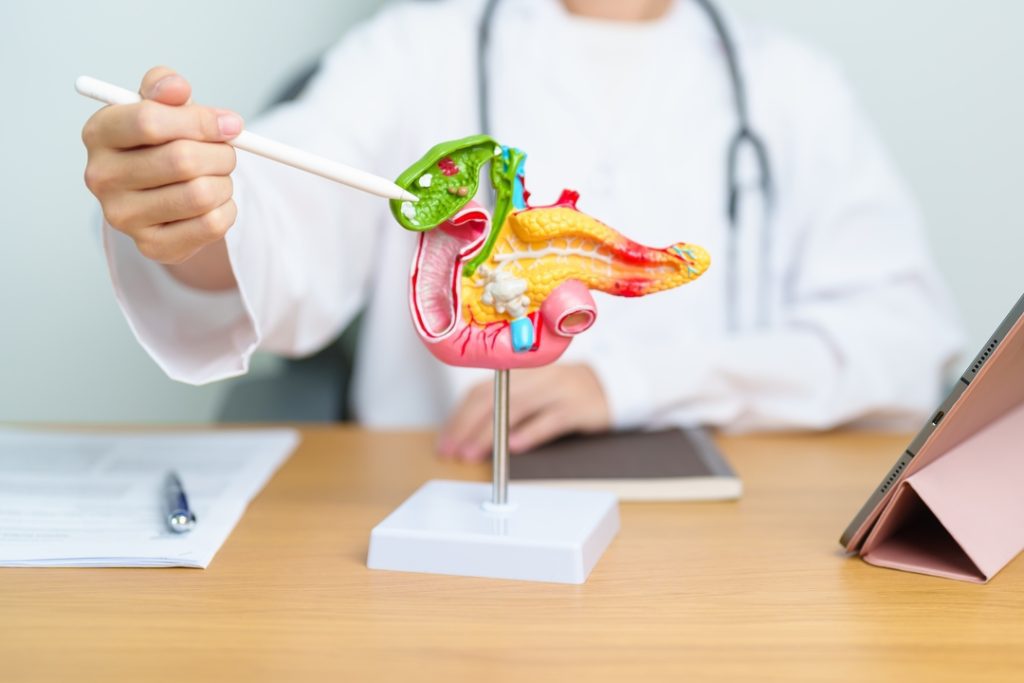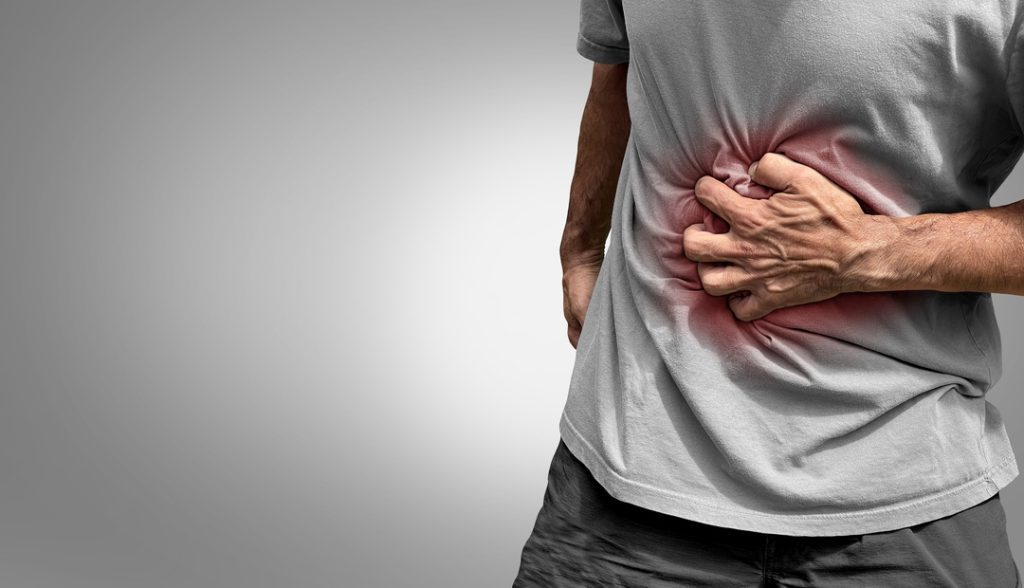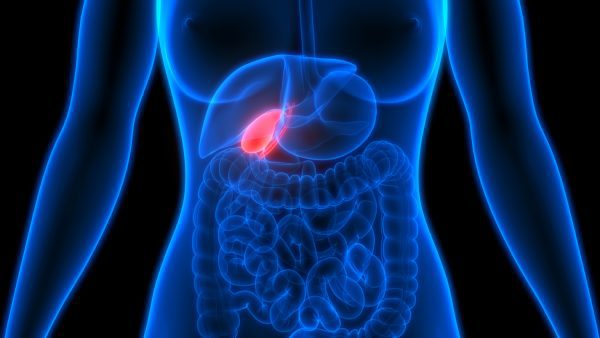Looking for Expert-Level VA Claim Answers?📱Call Us Now! 737-295-2226
In this guide, we will examine VA disability for gallbladder conditions. We’ll break down how the VA rates these conditions, how to prove service connection, and more.
If you’re a veteran with a gallbladder disorder, your health and daily functioning may be significantly impacted depending on the severity of your condition. Understanding VA disability ratings for gallbladder conditions and service-connected gallbladder issues is crucial to getting the VA compensation and benefits you deserve.
Table of Contents
Summary of Key Points
- Several common gallbladder disorders qualify for VA disability ratings.
- The VA rates gallbladder disorders based on symptom severity, frequency of attacks, and complications, with ratings of 0%, 10%, 30%, 50%, or 80%.
- The VA rates some gallbladder conditions as “presumptive” when symptoms occur within a year of your military service.
- Common primary service-connected conditions that may cause or worsen gallstones include IBS, GERD, and PTSD.
- Although gallstone symptoms may overlap with several other digestive disorders, the VA doesn’t allow “pyramiding” (i.e., obtaining multiple disability ratings for the same symptom or manifestation).

You DESERVE a HIGHER VA rating.
Take advantage of a VA Claim Discovery Call with an experienced Team Member. Learn what you’ve been missing so you can FINALLY get the VA disability rating and compensation you’ve earned for your service.
What is the Gallbladder?
The gallbladder is a pear-shaped organ below the liver on the right side of the abdomen. Its primary function is to store and concentrate bile, a digestive fluid that breaks down ingested fats in the small intestine. Gallbladder conditions occur when a problem, such as infection, inflammation, or a blockage, interferes with the gallbladder’s normal function.
Common Gallbladder Conditions in Veterans
Several maladies are considered typical when it comes to problems with the gallbladder.
Chronic Biliary Tract Disease
The chronic biliary tract disease diagnostic code (DC) 7314 pertains to several different maladies, such as:
- Biliary strictures – a narrowing or blockage of the bile ducts, such as in cancerous and non-cancerous bile duct tumors and other blockages)
- Sphincter of Oddi dysfunction – the sphincter of Oddi muscle located in the digestive tract doesn’t correctly open or relax, causing digestive juices (e.g., pancreatic fluid or bile) to back up, resulting in severe abdominal pain
- Bile duct injury – such as from a surgical procedure
- A choledochal cyst – a rare condition involving a fluid-filled sac that obstructs bile flow and may lead to severe complications such as inflammation of the pancreas
- Primary sclerosing cholangitis – rated under chronic liver disease without cirrhosis DC 7345
Note: See the description of primary sclerosing cholangitis below.
Primary Sclerosing Cholangitis
Sclerosing cholangitis is primarily a liver condition, but it can affect the gallbladder’s bile duct system (i.e., a system of tube-like structures that transport bile from the liver and gallbladder to the small intestine).
Sclerosing cholangitis involves inflammation and scarring of bile ducts, which causes these ducts to narrow and can lead to a high potential for blockage. When the bile is blocked, it accumulates in the liver, which could lead to liver failure in severe instances.
Cholelithiasis (Gallstones)
Gallstones are a very common gallbladder condition; according to a 2024 National Library of Medicine’s Stat Pearls publication, it’s estimated that as many as 14 million women and 6 million men in the U.S. have gallstones.
These hardened deposits (i.e., gallstones) in the gallbladder can vary in size. If the gallstones get big enough to block the bile ducts, they often cause pain, inflammation, or infection (i.e., cholecystitis); common symptoms of gallstones include:
- Nausea
- Vomiting
- Upper right abdomen pain
- Fever
Cholecystitis
Another common gallbladder condition is cholecystitis or inflammation of the gallbladder. This condition typically occurs when gallstones obstruct a bile duct called the “cystic duct.” Symptoms of cholecystitis include:
- Severe abdominal pain
- Nausea
- Fever
Rupture of the gallbladder may occur as a severe complication from untreated cholecystitis.
Chronic Gallbladder Disease
Recurring gallstones and inflammation are common symptoms of chronic gallbladder disease; other symptoms may include rigidity or scarring of the gallbladder.
Gallbladder Tumors (Cancerous or Non-Cancerous)
Tumors can form in the gallbladder, bile duct, pancreas, or other surrounding organs. Gallbladder tumors may be benign (i.e., non-cancerous) or malignant (i.e., cancerous). Complications are often associated with gallbladder tumors, even if they are benign; symptoms include:
- Bloating
- Upper right abdomen pain
- Nausea and vomiting
- Severe itching without a rash
- Unexplained weight loss
- Jaundice (i.e., yellowish tinge to the skin, whites of the eyes, dark urine, and pale colored
- Fever
- A mass (i.e., lump) that can be felt through the skin
Biliary Colic
Biliary colic is caused by episodes of severe abdominal pain caused by gallstones temporarily blocking the bile duct; this pain usually begins after eating fatty meals and subsides once the gallstone passes.
Gallbladder Polyps
Gallbladder polyps are abnormal, benign growths on the gallbladder’s lining that may be asymptomatic (i.e., no symptoms). Still, larger polyps can increase the risk of gallbladder cancer and may require removal.
Acalculous Cholecystitis
Acalculous (i.e., without stones) cholecystitis differs from typical cholecystitis in that it occurs without gallstones.
Critically ill veterans are more prone to developing acalculous cholecystitis, which is associated with conditions like trauma or severe infections.
Cholecystectomy
Your gallbladder is not a vital organ; in other words, you can live a normal life without it; however, if you require a cholecystectomy (i.e., surgical gallbladder removal), it will take time for your body to adjust after the surgery. Common symptoms after a gallbladder removal procedure include flatulence (i.e., gas), frequent bowel movements, and diarrhea.
After a gallbladder removal procedure, you will be on a restricted diet plan with small, frequent low-fat meals because the body can’t effectively digest large amounts of fat without bile produced by the gallbladder.
VA Disability for Gallbladder Conditions
The VA rates most gallbladder problems under digestive system conditions, CFR Title 38, Part 4 in its Schedule for Rating Disabilities. The VA has several ratings for gallbladder conditions, including DC 7317, 7301, 7314, 7315, and 7318. Each gallbladder condition diagnosis is rated according to the severity of symptoms, frequency of attacks, and complications: gallbladder VA disability ratings are 0%, 10%, 30%, 50%, or 80%.
Gallbladder Injury
Several types of gallbladder conditions are rated under this DC code 7317. Your rating depends on several factors, such as the severity and type of injury and how it affects your daily life.
Gallbladder adhesions (i.e., bands of scar tissue) involve the membrane that lines the abdominal cavity (i.e., the peritoneum); this is one type of “gallbladder injury.” Gallbladder adhesions are rated under DC 7301 at 0%, 10%, 30%, 50%, or 80%.
Condition: Peritoneum, adhesions due to surgery, trauma, disease, or infection (DC 7301)
0% VA Rating: History of peritoneal adhesions, currently asymptomatic
10% VA Rating: Symptomatic peritoneal adhesions, persisting or recurring after surgery, trauma, inflammatory disease process such as chronic cholecystitis or Crohn’s disease, or infection, as determined by a healthcare provider, and at least one of the following: (1) abdominal pain, (2) nausea, (3) vomiting, (4) colic, (5) constipation, or (6) diarrhea
30% VA Rating: Symptomatic peritoneal adhesions, persisting or recurring after surgery, trauma, inflammatory disease process such as chronic cholecystitis or Crohn’s disease, or infection, as determined by a healthcare provider; and medically-directed dietary modification other than total parenteral nutrition (TPN); and at least one of the following: (1) abdominal pain, (2) nausea, (3) vomiting, (4) colic, (5) constipation, or (6) diarrhea
50% VA Rating: Symptomatic peritoneal adhesions, persisting or recurring after surgery, trauma, inflammatory disease process such as chronic cholecystitis or Crohn’s disease, or infection, as determined by a healthcare provider; and clinical evidence of recurrent obstruction requiring hospitalization at least once a year; and medically-directed dietary modification other than total parenteral nutrition (TPN); and at least one of the following: (1) abdominal pain, (2) nausea, (3) vomiting, (4) colic, (5) constipation, or (6) diarrhea
80% VA Rating: Persistent partial bowel obstruction that is either inoperable and refractory to treatment or requires total parenteral nutrition (TPN) for obstructive symptoms
Chronic Biliary Tract Disease
The chronic biliary tract disease DC code 7314, includes chronic (i.e., long-term) conditions of the biliary tract (i.e., the network of ducts and organs that transport and store bile); specific biliary tract conditions include:
- Primary sclerosing cholangitis – rated under chronic liver disease without cirrhosis (DC 7345)
- Biliary strictures – narrowing of the bile duct that prevents the normal flow of bile
- Sphincter of Oddi (a muscular valve that controls the flow of bile into the digestive tract) dysfunction
- Bile duct injury – from trauma or because of a medical procedure.
- Choledochal cyst – a rare abnormality of the bile ducts
Chronic gallbladder or biliary tract conditions are rated based on the criteria specified in DC 7314 at 0%, 10%, or 30%.
| Condition | 0% VA Rating | 10% VA Rating | 30% VA Rating |
| Chronic Biliary Tract Disease (7314), including cholelithiasis (i.e., gallstones- DC 7315, | Asymptomatic, without a history of a clinically documented attack of right upper quadrant pain with nausea and vomiting in the past 12 months. | With one or two clinically documented attacks of right upper quadrant pain with nausea and vomiting in the past 12 months. | With three or more clinically documented attacks of right upper quadrant pain with nausea and vomiting during the past 12 months; or requiring dilatation of biliary tract strictures at least once during the past 12 months. |
Chronic Cholelithiasis
Chronic cholelithiasis (i.e., gallstones), DC 7315, is typically rated the same as chronic biliary tract disease (DC 7314)—see rating table above—depending on the severity of your symptoms and frequency of attacks.
Cholecystectomy
Cholecystectomy (i.e., gallbladder removal) is rated under diagnostic code (DC) 7318. Ratings from 10% to 30% are assigned to veterans with ongoing symptoms, such as abdominal pain or diarrhea after surgery.
| Condition | 0% VA Rating | 10% VA Rating | 30% VA Rating |
| Cholecystectomy (gallbladder removal- DC 7318) | Asymptomatic | With intermittent abdominal pain; and diarrhea characterized by one to two watery bowel movements per day | With recurrent abdominal pain (postprandial or nocturnal); and chronic diarrhea characterized by three or more watery bowel movements per day |
Adhesions Due to Surgery, Trauma, Disease, or Infection
Adhesions due to gallbladder trauma, disease, or surgery (DC 7301) are bands of scar tissue that form between abdominal tissues and organs due to surgical trauma, disease, or infection.
When abdominal adhesions occur in the peritoneum (tissue that lines the abdominal wall and pelvic cavity and covers abdominal organs), complications such as long-term abdominal pain can result.
The VA rating under Diagnostic Code (DC) 7301 depends on the severity of your symptoms and the extent of your health impairment.
Condition: Adhesions Due to Surgery, Trauma, Disease, or Infection (DC 7301)
0% VA Rating: History of peritoneal adhesions, currently asymptomatic
10% VA Rating: Symptomatic peritoneal adhesions, persisting or recurring after surgery, trauma, inflammatory disease process such as chronic cholecystitis or Crohn’s disease, or infection, as determined by a healthcare provider, and at least one of the following: (1) abdominal pain, (2) nausea, (3) vomiting, (4) colic, (5) constipation, or (6) diarrhea
30% VA Rating: Symptomatic peritoneal adhesions, persisting or recurring after surgery, trauma, inflammatory disease process such as chronic cholecystitis or Crohn’s disease, or infection, as determined by a healthcare provider; and medically-directed dietary modification other than total parenteral nutrition (TPN); and at least one of the following: (1) abdominal pain, (2) nausea, (3) vomiting, (4) colic, (5) constipation, or (6) diarrhea
50% VA Rating: Symptomatic peritoneal adhesions, persisting or recurring after surgery, trauma, inflammatory disease process such as chronic cholecystitis or Crohn’s disease, or infection, as determined by a healthcare provider; and clinical evidence of recurrent obstruction requiring hospitalization at least once a year; and medically-directed dietary modification other than total parenteral nutrition (TPN); and at least one of the following: (1) abdominal pain, (2) nausea, (3) vomiting, (4) colic, (5) constipation, or (6) diarrhea
80% VA Rating: Persistent partial bowel obstruction that is either inoperable and refractory to treatment or requires total parenteral nutrition (TPN) for obstructive symptoms
NOTE: It’s important to note that although some of the symptoms of gallbladder disease can overlap, the VA doesn’t allow “pyramiding” (i.e., obtaining multiple disability ratings for the same symptom or manifestation). In other words, you can only receive VA compensation once for each gallbladder-related symptom, regardless of whether it manifests in several GI conditions.
The VA rater will select the diagnostic code most relevant to your symptoms/condition, resulting in the highest VA disability rating.

VA Service Connection for Gallbladder Conditions
The VA approves several types of service connections, including:
Direct Service Connection
The most common way to pursue VA disability benefits is through direct service connection.
To show a direct service connection, you must submit evidence, including the following:
- A current gallbladder condition diagnosis
- The occurrence of an in-service event, injury, or illness; and
- A medical nexus (i.e., a link between your gallbladder condition and the in-service occurrence)
It is important to note that environmental toxins are commonly linked with in-service events related to gallbladder disorders.
Secondary Service Connection
Secondary service connection shows that an existing service-connected condition caused or worsened your gallbladder symptoms. Your secondary condition may be compensable if the VA agrees that your previously service-connected condition contributed to or caused the development of a secondary condition.
Presumptive Service Connection
Presumptive service connection removes the VA’s requirement to show an in-service event, injury, disease, or aggravation. Consequently, you do not need to submit evidence proving your military service caused your condition. The presumption serves as the nexus.
Presumptive Service Connection for Gallbladder Conditions
Gallbladder cancer is a presumptive condition for ionizing radiation. This type of radiation can be produced naturally (e.g., via certain radioactive elements in the earth) or artificially (e.g., in gamma rays, X-rays, or nuclear reactions).
You may be eligible for VA disability benefits if you served in an area with radioactive materials and developed radiation-related illnesses, such as gallbladder cancer.
If you developed gallbladder cancer within a year of your military service, the VA considers your condition presumptive; this means you will not be required to show a medical nexus (i.e., evidence proving your military service caused your condition
Burn Pits and Gallbladder Cancer
American military bases in Iraq, Afghanistan, and Djibouti employed open-air burn pits to dispose of toxic waste after September 11, 2001; these “pits” emitted toxic smoke that is linked to a long list of health conditions in veterans.
Several types of respiratory disorders, cancer, and other conditions—including gallbladder disorders (e.g., gallbladder tumors)—have been diagnosed in veterans exposed to hazardous materials burned in open-air burn pits.
Burn Pits: Gallbladder and Gastrointestinal Cancer
One toxin released by burn pits, known as TCDD, is also found in the chemical known as Agent Orange.
The VA has established a presumption for veterans with gastrointestinal cancer of any type—including gallbladder cancer—who were exposed to burn pit chemicals.

Secondary Conditions that Cause or Contribute to Gallstones
VA Gallstones Secondary to IBS
The VA rates irritable bowel syndrome (IBS) from 10% to 30%.
Irritable bowel syndrome (IBS), VA diagnostic code 7319, is a chronic (i.e., long-term) digestive disorder involving cramps, abdominal pain, constipation, diarrhea, and frequent urges to use the bathroom. IBS is triggered by emotional stress and eating certain foods.
A 2008 study shows the prevalence of gallstones and cholecystectomy (i.e., removal of the gallbladder) is significantly higher in those with irritable bowel syndrome.
Gallstones Secondary to GERD
Gastroesophageal reflux disease (GERD) is a digestive disorder involving regurgitation (food and stomach content that backs up into the esophagus after eating). GERD symptoms include heartburn (i.e., a burning sensation in the chest or throat), a feeling that something is stuck in the throat, upper abdominal pain, nausea, and vomiting.
Long-term, severe GERD can damage the lining of the esophagus scar tissue, which narrows the esophagus and causes dysphasia (i.e., difficulty swallowing).
GERD VA disability ratings, under DC 7206, are rated at 0%, 10%, 30%, 50%, or 80%, depending on the severity of your symptoms, the frequency of treatment (e.g., dilatation or surgery), and complications such as weight loss, aspiration, or undernutrition
A 2015 study linked GERD with an increased incidence of gallbladder disease, possibly due to the effect of GERD medication, such as protein pump inhibitors (PPIs). PPIs are known to reduce gallbladder function and contribute to gallbladder dysfunction.
Gallstones Secondary to PTSD
Post-traumatic stress disorder (PTSD) can contribute to gallstones via its stress-related impact on the body. The body’s stress response interferes with the functioning of the gallbladder and its ability to empty properly. Therefore, bile stasis (i.e., lack of proper bile flow) can facilitate gallstone formation.
PTSD, under DC 9411, is rated from 0% to 100%, depending on your symptoms and the extent to which they with your ability to function and work.
Filing a VA Gallbladder Claim
You can begin filing your gallbladder disability claim when you receive your current diagnosis, medical records, and other documentation. Documentation that may bolster your disability claim includes:
- Service records relevant to your case
- Quality medical documentation (e.g., a current medical diagnosis and applicable testing results
- A nexus letter (e.g., a document that is often the missing link in VA claims that are denied)
A nexus letter is a formal document written by a licensed healthcare provider to support service connection for your VA gallbladder disability claim.
A well-written nexus letter includes:
- Detailed information on your current diagnosis
- How your symptoms impact your quality of life
- Whether symptoms interfere with your daily life or ability to maintain employment.
You can file your claim online, via fax, mail, or in person at your local VA center. You must download and complete the VA Form 21-526EZ for claims not filed online.
(FAQs) Frequently Asked Questions
What are the first signs of a gallbladder condition?
Typically, a person with a gallbladder condition initially experiences right-sided upper abdominal pain near the rib cage. The pain is often described as gnawing or gripping and may travel to the upper back. Nausea and vomiting may accompany the abdominal pain.
How does the VA rate gallbladder conditions?
Gallbladder conditions are rated under DC 7317, 7301, 7314, or 7318 at 0% to 80%, with breaks at 10%, 30%, and 50%, depending on the type of gallbladder condition and the severity of your symptoms.
How does the PACT Act apply to gallbladder VA disability?
The PACT Act expanded benefits for veterans who were exposed to burn pit toxins during military service. Namely, those with gallbladder cancer became eligible for presumptive service connection.
Want Expert-Level Support for Your VA Disability Claim? WE GOT YOUR SIX!

How does VA Claims Insider help veterans?
We make the confusing and frustrating VA claim process EASY through our 8-step proprietary system and one-on-one coaching; we’re the VA Claim EXPERTS you can trust, and YOU are never alone in this fight against the VA!
You’ll also receive VA disability expert Brian Reese’s SEM Method Blueprint—a proven formula that has helped over 25,000 veterans win their VA disability claims faster:
Strategy + Education + Medical Evidence = VA Rating and Compensation You Deserve FASTER!
Start today and unlock an exceptional level of service you deserve for serving our country:
-
You’ll hear from a VA Claim Expert over email within 15 minutes of signing up today.
-
You’ll hear from your Veteran Coach team within 24 hours of all inquiries during normal business days/hours.
-
Our terms are clear and simple: If we don’t win, you don’t pay. You have nothing to lose and everything to gain.
Click the red button below to start the process of winning your VA claim right now!
About the Author

Sherry Christiansen
Sherry Christiansen is a professional Medical Writer with a clinical mental health background. Over the last decade, she has written health and wellness articles for organizations like Medical News Today, Verywell Health, and Healthline. In 2013, she also helped launch an educational website for the first Alzheimer’s prevention clinic in the country at Weill Cornell Medical Center – NewYork-Presbyterian. As a spouse of a career military service member, Sherry is deeply passionate about supporting veterans. It is an honor for her to assist veterans in receiving the benefits they deserve after becoming ill or injured while serving our country.


